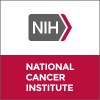
Impact of Computerized Decision Support for ANTIBIOtic Prescription in Cancer Patients With Febrile...
Febrile NeutropeniaTreatment of patients with febrile neutropenia (FN) attending Emergency Departments (EDs) relies on rapid antibiotic initiation in order to control a presumed infection. The choice of initial antibiotics is empirical and depends on patient's prior colonization or infection by multi-drug resistant pathogens (MDRPs) and risk stratification. Stratification of high-risk patients needing broad-spectrum antibiotics is debated. Thus, for non-specialist physicians, this choice may be challenging, leading to inappropriate initial antimicrobial regimens, potential risks for the patient and higher costs. Furthermore, international guidelines recommended to develop antibiotic stewardship programs and promoted an initial strategy based on escalation or de-escalation approaches, with early reassessment depending on patients' clinical course and microbiological results. Nevertheless, this interesting strategy may increase the level of complexity for the choice of the initial antibiotic regimen by non-specialist emergency physicians who are often the first prescribers in this context. We developed an interactive computerized decision support app (CDSA) for initial antibiotic prescription and early revaluation in patients with FN. The first goal of this app is to assist non-specialized physicians in choosing initial antimicrobial regimen for patients with FN when they attend EDs. It uses an interactive algorithm based on international guidelines that takes into account patients' medical history and characteristics. Secondly, the app is also designed to propose an algorithm of antibiotic revaluation at day 3-4 for hospitalized patients, depending on patient clinical course, and biological and microbiological results. The revaluation suggests antimicrobial modification (escalation or de-escalation) or discontinuation and stopping rules with recommended duration of therapy also based on international guidelines. We hypothesize that such a CDSA may improve the adherence to guidelines for the choice of initial antibiotic regimen for FN in the ED, favour early antibiotic reassessment for hospitalized patients, both decreasing the risk of treatment failure.

Management of Severe Chemotherapy-induced Neutropenia in Advanced Breast Cancer
Febrile NeutropeniaTo assess the safety and establish the dose to assess the pharmacokinetic activity following administration of EC-18 in patients with advanced breast cancer receiving low febrile neutropenia risk chemotherapy who are the candidates for second-line or higher combination therapy with doxorubicin and cyclophosphamide.

Pharmacokinetic/Pharmacodynamic Study of Doripenem in Febrile Neutropenic Patients
Febrile NeutropeniaPrimary: To determine the serum pharmacokinetics (PK) of doripenem in febrile neutropenic patients. Secondary: Monte Carlo Simulations Tested Against Various Gram-negative Isolates and Reported as Probability of Target Attainment (40% Time (fT)> minimum inhibitory concentration (MIC))

A 28 - 90 Days Study to Evaluate the Safety, Tolerability, and Efficacy of Caspofungin Injection...
Fungal InfectionThe purpose of this study is to evaluate the safety, tolerability and efficacy of ertapenem sodium as initial therapy for the treatment of complicated urinary tract infections, including pyelonephritis in indian adults.

Study to Evaluate the Safety, Tolerability and PK of EC-18 After Oral Administration in Healthy...
Chemotherapy-Induced NeutropeniaThis study is a Dose block-randomized, Double-blind, Placebo-controlled, Single and Multiple Ascending Dose Escalation, Phase I clinical trial to assess the safety, tolerability and pharmacokinetics of single-dose and multiple-dose oral administration of the investigational product, EC-18 (study drug) in healthy adult male volunteers.

A comparatiVe Study on Efficacy and Safety of Lipegfilgrastim in Comparison to Pegfilgrastim in...
Aggressive B Cell Non-Hodgkin Lymphomas at High Risk for R-CHOP-21-induced NeutropeniaThe primary objective of the study is to demonstrate non-inferiority of lipegfilgrastim to pegfilgrastim for the duration of severe neutropenia in the first cycle of chemotherapy.

Carboplatin, Paclitaxel, and Pegfilgrastim in Treating Patients With Stage III or Stage IV Ovarian...
Fallopian Tube CarcinomaInfectious Disorder5 moreThis phase I trial is studying the side effects of giving carboplatin and paclitaxel together with pegfilgrastim in treating patients with stage III or stage IV ovarian epithelial, fallopian tube, primary peritoneal, or carcinosarcoma cancer. Drugs used in chemotherapy, such as carboplatin and paclitaxel, work in different ways to stop the growth of tumor cells, either by killing the cells or by stopping them from dividing. Colony-stimulating factors, such as pegfilgrastim, may increase the number of immune cells found in bone marrow or peripheral blood and may help the immune system recover from the side effects of chemotherapy. Giving carboplatin and paclitaxel together with pegfilgrastim after surgery may kill any tumor cells that remain after surgery.

Once-Daily Amikacin Plus Cloxacillin in Febrile Neutropenic Children
NeutropeniaCancer1 moreOnce-daily dose administration of aminoglycoside in adults is effective and economical. However, its value in febrile neutropenic children, especially in Thailand, is less well researched. In the area where Pseudomonas aeruginosa prevalence in febrile neutropenic children is low, the combination of cloxacillin and amikacin is an appropriate approach. This study would like to compare the efficacy and safety including cost between these two amikacin administrations (once-daily or twice-daily) in combination with cloxacillin as an empirical therapy in febrile neutropenic children. Hypothesis: Once-daily amikacin plus cloxacillin can be used to treat febrile neutropenic children in Khon Kaen, Thailand.

Combination Chemotherapy in Treating Patients With Newly Diagnosed Metastatic Ewing's Sarcoma or...
NeutropeniaSarcomaPhase II trial to study the effectiveness of combination chemotherapy in treating patients with newly diagnosed metastatic Ewing's sarcoma or primitive neuroectodermal tumor. Drugs used in chemotherapy use different ways to stop tumor cells from dividing so they stop growing or die. Combining more than one drug may kill more tumor cells.

SWOG-9400 Combination Chemotherapy With or Without Bone Marrow Transplantation in Treating Patients...
LeukemiaNeutropenia1 moreRATIONALE: Drugs used in chemotherapy use different ways to stop cancer cells from dividing so they stop growing or die. Combining chemotherapy with bone marrow transplantation may allow the doctor to give higher doses of chemotherapy drugs and kill more cancer cells. PURPOSE: Phase II trial to study the effectiveness of combination chemotherapy with or without bone marrow transplantation in treating patients who have acute lymphocytic leukemia.
